
Gary Cooper was an American actor known for his strong, quiet screen persona and understated acting style. He won the Academy Award for Best Actor twice and had a further three nominations, as well as an Academy Honorary Award in 1961 for his career achievements. He was one of the top 10 film personalities for 23 consecutive years and one of the top money-making stars for 18 years. The American Film Institute (AFI) ranked Cooper at No. 11 on its list of the 25 greatest male stars of classic Hollywood cinema.

Alice Cooper is an American rock singer whose career spans over five decades. With a raspy voice and a stage show that features numerous props and stage illusions, including pyrotechnics, guillotines, electric chairs, fake blood, reptiles, baby dolls, and dueling swords, Cooper is considered by many music journalists and peers to be "The Godfather of Shock Rock". He has drawn equally from horror films, vaudeville, and garage rock to pioneer a macabre and theatrical brand of rock designed to shock audiences.

Bradley Charles Cooper is an American actor and filmmaker. He is the recipient of various accolades, including a British Academy Film Award and two Grammy Awards, in addition to nominations for nine Academy Awards, six Golden Globe Awards, and a Tony Award. Cooper appeared on the Forbes Celebrity 100 three times and on Time's list of the 100 most influential people in the world in 2015. His films have grossed $11 billion worldwide and he has placed four times in annual rankings of the world's highest-paid actors.

Anderson Hays Cooper is an American broadcast journalist and political commentator from the Vanderbilt family. He is the primary anchor of the CNN news broadcast show Anderson Cooper 360°. In addition to his duties at CNN, Cooper serves as a correspondent for 60 Minutes on CBS News. After graduating from Yale University with a Bachelor of Arts in 1989, he began traveling the world, shooting footage of war-torn regions for Channel One News. Cooper was hired by ABC News as a correspondent in 1995, but he soon took more jobs throughout the network, working for a short time as a co-anchor, reality game show host, and fill-in morning talk show host.

Cambarus is a large and diverse genus of crayfish from the United States and Canada. The adults range in size from about 5 centimeters (2 in) up to approximately 15 centimeters (6 in).
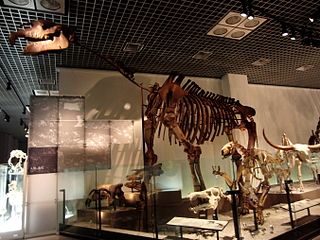
Paraceratherium is an extinct genus of hornless rhinoceros. It is one of the largest terrestrial mammals that has existed and lived from the early to late Oligocene epoch. The first fossils were discovered in what is now Pakistan, and remains have been found across Eurasia between China and the Balkans. It is classified as a member of the family Paraceratheriidae. Paraceratherium means "near the hornless beast", in reference to Aceratherium, the genus in which the type species P. bugtiense was originally placed.
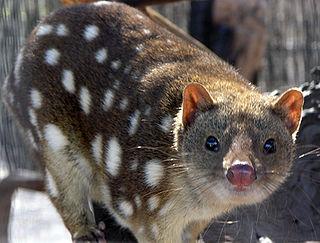
The tribe Dasyurini includes several genera of small carnivorous marsupials native to Australia: quolls, kowari, mulgara, kaluta, dibblers, neophascogales, pseudantechinuses, and the Tasmanian devil.
Gryponyx is an extinct genus of massopod sauropodomorph known from southern Free State, central South Africa.

Gyposaurus is a genus of basal sauropodomorph dinosaur from the early Jurassic of South Africa. It is usually considered to represent juveniles of other prosauropods, but "G." sinensis is regarded as a possibly valid species.
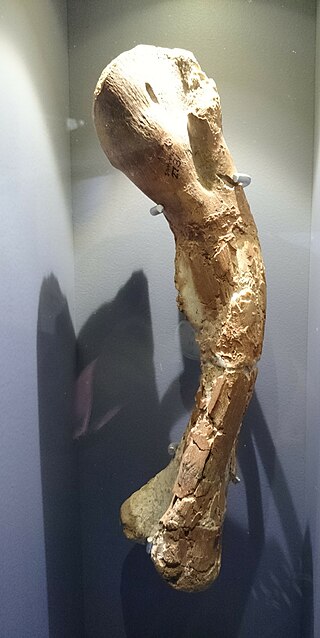
Kangnasaurus is a genus of iguanodontian ornithopod dinosaur found in supposedly Early Cretaceous rocks of South Africa. It is known from a tooth and possibly some postcranial remains found in the early-Aptian Kalahari Deposits Formation. It was probably similar to Dryosaurus.

Nicholas Edward Brown was an English plant taxonomist and authority on succulents. He was also an authority on several families of plants, including Asclepiadaceae, Aizoaceae, Labiatae and Cape plants.

Rory Cooper's false antechinus, also known as the tan false antechinus and the tan pseudantechinus, is a recently named species of small carnivorous marsupial which inhabits rocky outcrops in Western Australia. Nothing is known of its behaviour but it is expected that this will be similar to other members of the false antechinus genus. A study published in 2017 found no support for separation as a new species of Pseudantechinus, and the name was proposed to be synonymous with the previously described Pseudantechinus macdonnellensis.

The Hymenogastraceae is a family of fungi in the order Agaricales with both agaric and false-truffle shaped fruitbodies. Formerly, prior to molecular analyses, the family was restricted to the false-truffle genera. The mushroom genus Psilocybe in the Hymenogastraceae is now restricted to the hallucinogenic species while nonhallucinogenic former species are largely in the genus Deconica classified in the Strophariaceae.
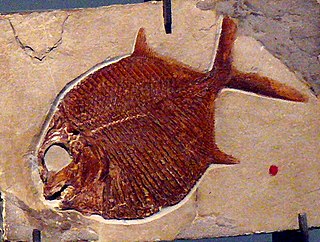
Pycnodontiformes is an extinct order of primarily marine bony fish. The group first appeared during the Late Triassic and disappeared during the Eocene. The group has been found in rock formations in Africa, Asia, Europe, North and South America. They were small to middle-sized fish, generally with laterally-compressed deep bodies, some with almost circular outlines, adapted for manuverability in reef-like environments. The group was morphologically diverse containing forms such the very short but deep Gebrayelichthyidae and the horned Ichthyoceros, both from the early Late Cretaceous of Lebanon. Most, but not all members of the groups had jaws with round and flattened teeth, well adapted to crush food items (durophagy), such as echinoderms, crustaceans and molluscs. Some pyncodontiformes developed piranha like teeth used for eating flesh. Most species inhabited shallow marine reef environments, while a handful of species lived in freshwater or brackish conditions. While rare during the Triassic and Early-Middle Jurassic, Pycnodontiformes became abundant and diverse during the Late Jurassic, remaining diverse until a burst of diversifiication at the beginning of the Late Cretaceous, after which they began to gradually decline, with a more sudden decline at the end of the Cretaceous due to the collapse of reef ecosystems, finally becoming extinct during the Eocene.

Composita is an extinct brachiopod genus that lived from the Late Devonian to the Late Permian. Composita had a cosmopolitan global distribution, having lived on every continent except Antarctica. Composita had a smooth shell with a more or less distinct fold and sulcus and a round opening for the pedicle on the pedicle valve. Composita is included in the family Athyrididae and placed in the subfamily Spirigerellinae.

Euglossa bazinga is a euglossine bee species found in Brazil. It is named after the catchphrase of the fictional character Dr. Sheldon Cooper from the television show The Big Bang Theory. It was previously misidentified as Euglossa ignita, and is threatened with habitat loss.
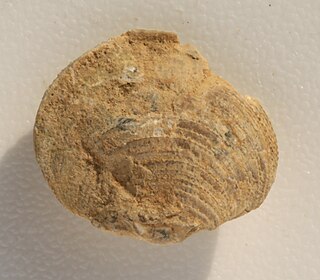
Cleiothyridina is an extinct genus of brachiopods.
The following is a taxonomy of extant (living) Brachiopoda by Emig, Bitner & Álvarez (2019). There are over 400 living species and over 120 living genera of brachiopods classified within 3 classes and 5 orders, listed below. Extinct groups are not listed.

Australotitan is an extinct genus of titanosaurian sauropod that existed during the Cenomanian-Turonian age of the Late Cretaceous in what is now southern-central Queensland, Australia. The genus contains a single species, Australotitan cooperensis.

Terebratulina is a genus of brachiopods belonging to the family Cancellothyrididae. The genus has a cosmopolitan distribution.

















